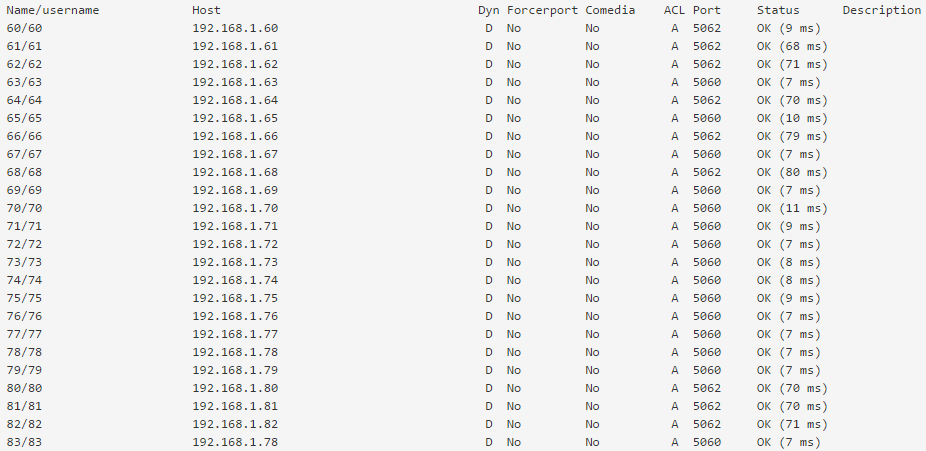Hi guys!
We’ve got a big problem in our company and I thought that maybe you could help us. At the beginning of the October, we’ve had a problem with our PBX that led us to hard disk replacement and setting up a fresh copy of FreePBX with Asterisk 13. Before this situation we were using very old copy of FreePBX, that was set up by another company, but it was working decently.
Now everything seems to be okay, but there’s one thing, that we need to solve fast. We’ve got offices in one city, and a branch with call center in another. Each of us has its own PBX (the HDD was replaced in the one used by call center). PBX in call center is connected with GSM trunks (3 via IAX, 3 via SIP). PBX in our main location is connected to PRA/ISDN/digital lines. Both of these machines are connected to each other via IAX.
We’ve got a configuration that allows consultants in our call center to place calls via these digital lines, so it goes like this: consultant phone → call center’s PBX → main PBX → digital line. Also we do it the other way around, for example for IVR.
Internal calls in call center work fine, internal calls from CC to our main location work fine too, calls placed via GSM trunks also work fine for all phones too. The problem is that the employees that use two models of phones can’t hear the dialed person (they hear the signal, but after call being answered, they hear nothing).
In our call center we are using three models of Yealink phones - SIP-T20P, SIP-T21P E2 and one VP530. The last two are the ones that have this problem.
The problem lies somewhere between PBX in call center and the phone. Why I think so? Because if you listen to the recording of the call, there are voices of both people recorded.
Another interesting thing is that SIP-T20P phones are displayed by Asterisk as registered on the port 5062, while the SIP-T21 are being registered on port 5060, but the VP530 phone registers on port 5062 as the SIP-T20P do, but it has the same problem as the SIP-T21. I’ve tried changing local port to 5062 and enabling RPort in the phone settings. Now the phone registers on the port 5062, but it still doesn’t work properly.
Earlier I was thinking that this problem may be related to the fact, that in new version of FreePBX I’ve tried to use PJSIP instead of regular SIP, but switching back to the legacy SIP didn’t help.
Do you have any idea how can we solve it? I’ll provide any additional information if you’ll need it.
Thanks in advance! You’ll save my life if we can get rid of this problem ![]()

